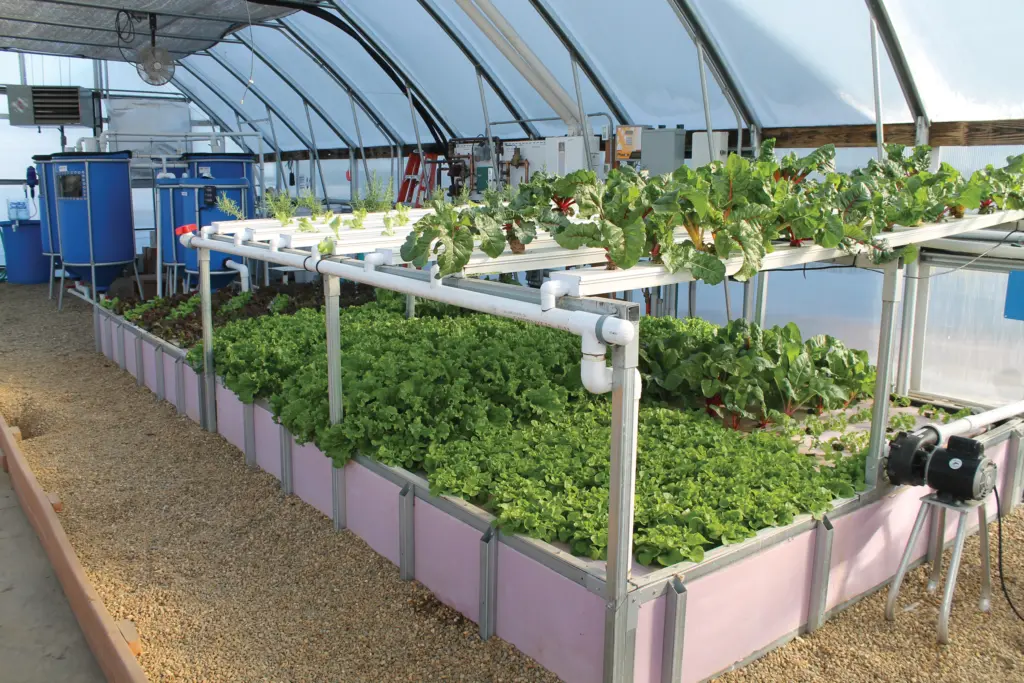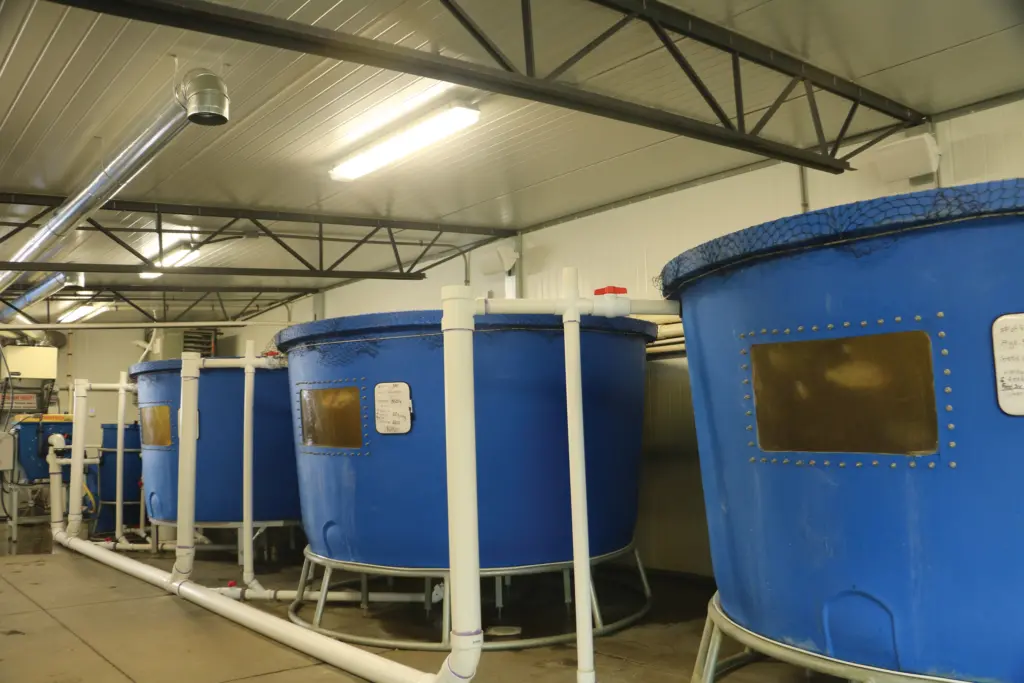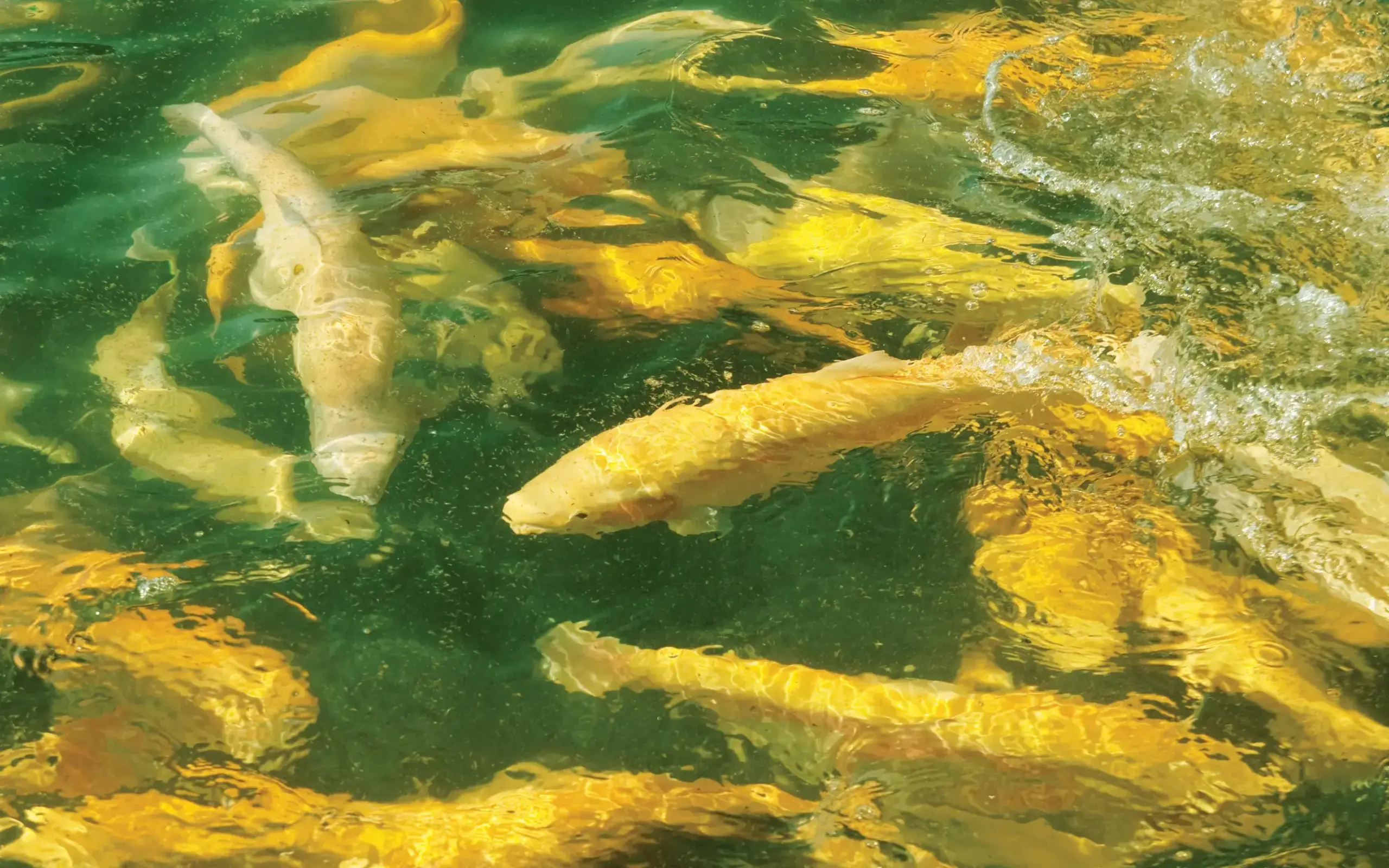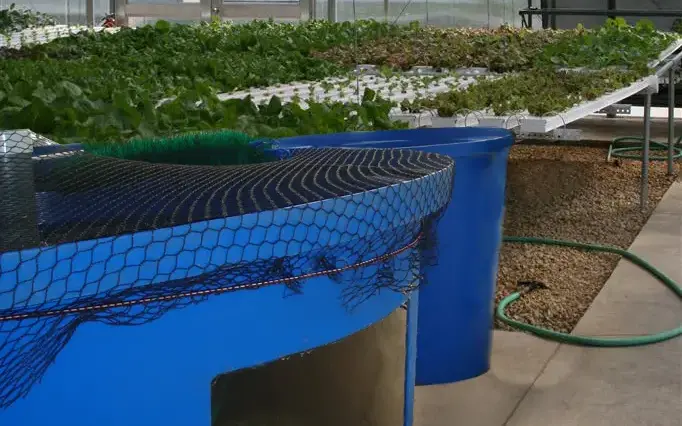Commercial Aquaponics for Beginners: Integrating an Aquaponics System
An Overview of Aquaponics for Beginners
Aquaponics is a unique hybrid of two practices: aquaculture, or raising fish in tanks and ponds, and hydroponics. Fish release waste that is rich in nutrients, and then beneficial bacteria break down the fish waste, producing a natural fertilizer that’s taken up by the plants. In return, the plants generate clean, purified water that returns to the fish tank. It’s the perfect symbiotic relationship.
An aquaponics system is especially valuable for those with limited or no access to arable land and water. Because the water in aquaponics is recycled, growing food is more sustainable, and crops can even be produced during droughts. Those who are starting aquaponics have a wealth of benefits to look forward to, such as increased water efficiency, no need for soil, faster growing and low risk of pests and disease.
Starting aquaponics is a fantastic way to learn about controlled environment growing and can boost the profitability of a grow space. The combination of higher yields with lower operating expenses is a recipe for maximizing profits, no matter where the grower is located.
Creating the Right Aquaponics System
To learn aquaponics for beginners, growers should first become familiar with the different aquaponic systems. They come in three distinct styles: Deep-water culture (DWC,) nutrient-film technique (NFT) and media beds.
In DWC systems, crops are planted in foam rafts that float on top of nutrient-rich water and solid waste is filtered out before it can reach the roots of the plants. With NFT, slow-moving water is funneled into narrow channels and circulated back to the fish tank. Filtration equipment is used to clear water of biological waste before it is recirculated.
DWC and NFT are commonly practiced in commercial settings. Media beds are simply containers filled with porous rocks, like expanded clay pebbles, where water from the fish tank is pumped to the container. Water can either be pumped continuously or by flooding and draining the container.

The flood and drain method, also known as ebb and flow, is easy to maintain. Media beds are strongly recommended for beginners, as they are simple to operate, affordable and require no additional filtration.
Before picking out fish for the aquaculture tank, growers must consider the quality of their local water source, what feed sources are available and if selling fish to a local market is viable. There are a wide variety of edible and ornamental fish to choose from, including tilapia, trout, bluegill, brim, koi and goldfish.
Different fish require varying temperatures and types of fish food to survive, so growers should be sure to match the fish with the right environment and intended purpose. For instance, if a grower isn’t interested in eating their fish, ornamental breeds like koi and goldfish are good choices, since they are much easier to care for than some edible species.
Growers starting aquaponics are encouraged to get an appropriately sized system from a reputable seller to ensure there are no equipment failures. Those who want to go commercial are strongly advised not to build their own setup, since it’s difficult to confirm that a homemade system is correctly sized, or that reused containers aren’t leaching chemicals into the water.
Looking for an aquaponics system? Take a look at our products here.
Key Components Of An Aquaponics System
Creating a balanced system where both fish and plants can thrive is a delicate process. These setups generally require more components than the average hydroponics system, but with the right equipment working in unison, operations will find it easy to grow high-quality crops and raise healthy fish simultaneously.
Fish Tank – A piece that is unique to this method of growing, the tank where growers will house their fish is crucial to creating a successful aquaponics setup. It’s important for operations to get a high-quality tank that’s proportionate to the size of their growing space, as well as adequate for the number and type of fish they plan to raise, so they can achieve their desired production scale.
Growing System – This will either be foam rafts, media beds or NFT channels, depending on the type of system growers decide to raise their crops in. No matter the choice, operations will want to ensure their plants grow in a system made from durable, non-toxic materials and that provides them with enough space to maximize yields each growing cycle.

Water & Air Pump – The water pump will be the catalyst that recirculates water throughout the entire setup, keeping it flowing between the fish tank and the growing system. At the same time, the air pump works to oxygenate the water in the system. Fish depend on that oxygen to survive, and for growing methods where plant roots stay submerged in nutrient-rich water, the added oxygen ensures they won’t drown.
For the entire aquaponics system to work correctly, each piece of equipment will need to be connected by various parts, like any applicable pipes, tubing and fittings. To master commercial aquaponics for beginners, growers will also benefit from acquiring supplemental equipment, like monitoring systems, timers, controllers and even a water heater, depending on their location and desired water temperature.
Sign Up Now To Learn More
Succeeding in Commercial Aquaponics
To thrive in commercial aquaponics, growers can follow three rules – don’t ignore bugs, keep the fish tank healthy and accessible and maintain high-quality water. Although aquaponics crops are less likely to suffer from a pest infestation, they can still succumb to aphids, spider mites and white flies, which often hitch rides on seedlings purchased from nurseries.
Predatory insects, like beetles, ladybugs or ladybirds, help to naturally control the presence of unwanted insects. In some cases, unwanted insects can even be fed directly to the fish as a source of extra protein. There’s a wide array of both organic and chemical sprays designed to repel harmful bugs in aquaponics systems as well.
Hot summer days can send water temperature soaring, throwing off pH and potentially harming fish. Air conditioners or fans can help maintain the temperature fish require. Aquaponic growers must also balance the fish to plant ratio, because too many fish can kill both fish and plants.
Secondly, the fish tank should always be readily accessible. It’s common for growers to mount grow beds on top of fish tanks to save space, but this can make it hard to observe what’s going on inside the tank, change the water and catch the fish. Be sure the layout of the fish tank and growing channels are arranged in a way that makes it convenient to observe and interact with the fish on a regular basis.
One common misconception about aquaponics is that it is a complete ecosystem. Although it’s highly sustainable, most commercial aquaponics systems need supplemental nutrition to succeed.
Growers are encouraged to supplement their water source with chelated iron, calcium or potassium carbonate and some micronutrient in order to keep pH levels in check. In addition, fish produce a lot of ammonia, which can be deadly to fish when levels get too high.
This will be followed by the appearance of nitrites. Nitrites are created through the breakdown of ammonia by bacteria in the fish tank. These are toxic to fish, as they bind with hemoglobin in a fish’s blood and form methemoglobin, a configuration of the protein that does not carry oxygen through their body. As a result, a tank with high nitrite waters can cause fish to suffocate, even with an abundance of oxygen present.
Growers should check ammonia and nitrite levels weekly with a test kit to make sure their water is stabilized. Excess ammonia in the water tank should be diluted, removed or converted.
Lastly, growers should aim to maintain a high level of dissolved oxygen in order to avoid having sick fish. Oxygen tanks and air pumps will keep dissolved oxygen levels up and infestations at bay.
Another issue that commonly plagues aquaponic systems is green algae, which loves sunlight. Algae overgrowth can drastically reduce oxygen and throw off pH levels. Growers can easily curb the growth of algae by shading fish tanks with dark tarps, painting the tank black or adding rocks to media beds until the water’s surface is covered.


Need A Space That's Perfect For Aquaponics For Beginners?
If commercial growers are looking to start an aquaponics operation, but don’t have the space needed to do so, a greenhouse can provide an ideal setting. Greenhouses allow commercial growers to create a controlled environment that is optimal for both raising fish and growing plants. Whether growers are looking to produce leafy greens, tomatoes or any other type of crop, an aquaponics greenhouse can help them establish a year-round operation that’s more sustainable and energy-efficient than other growing methods.
When aspiring aquaponic growers choose GrowSpan, they can access everything they need in one convenient location. GrowSpan can provide them with a high-quality commercial greenhouse on any scale, as well as a commercial aquaponics system that can be operated by growers of every experience level. HydroCycle Commercial Aquaponics Systems even come complete with a fingerling system, which performs necessary filtration and bio-clarification, while also being self-cleaning, resulting in a low-maintenance system that helps growers save time and money.
What makes aquaponics exciting is that there are so many different growing techniques, meaning a setup can be as straightforward or complex as the grower is comfortable with. Whether it’s for a small-scale grow space or a large commercial greenhouse, a ready-made aquaponics system can empower growers everywhere to get their business up and running quickly, so they can focus their energy on harvesting.
To learn more about aquaponics for beginners, call or Request a Quote today.
This post was originally published in July, 2018 and has been updated for freshness, accuracy and comprehensiveness.
Related Articles
Growing Methods To Meet Demand For Green Production
In contrast to traditional methods, many growers are changing operations to include greenhouses and the latest growing methods, including hydroponics and aquaponics.
Growing Smarter: An Overview Of A Hydroponic Greenhouse
For growers looking to implement a hydroponic greenhouse in their operation, they’ll first need to gather information and explore all their options.
How To Minimize Water Borne Disease In Hydroponic Growing
Although using a hydroponics system may eliminate soil borne pests, there are pests and fungi that spread through water, which means cleaning equipment and using an additional filtration system can drastically help reduce the occurrence of disease spreading.
The Complete Guide To Hydroponic Growing Systems: Choosing The Right Hydroponic Garden System
Using this detailed breakdown, growers can get the information they need to choose their ideal hydroponic garden system and implement it into their operation.

